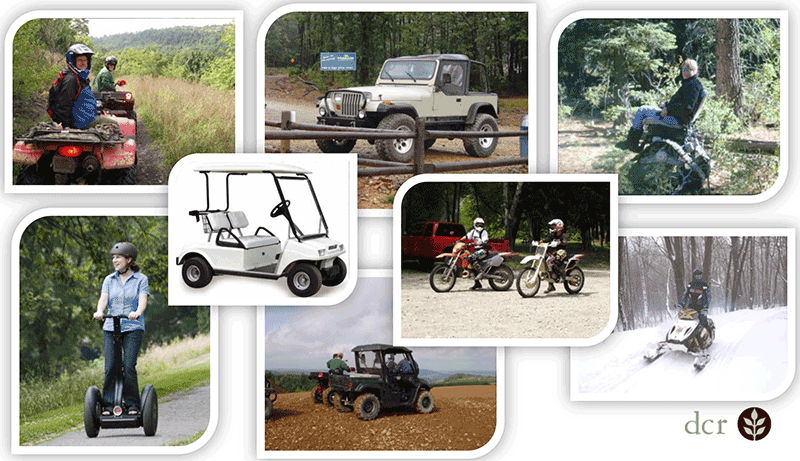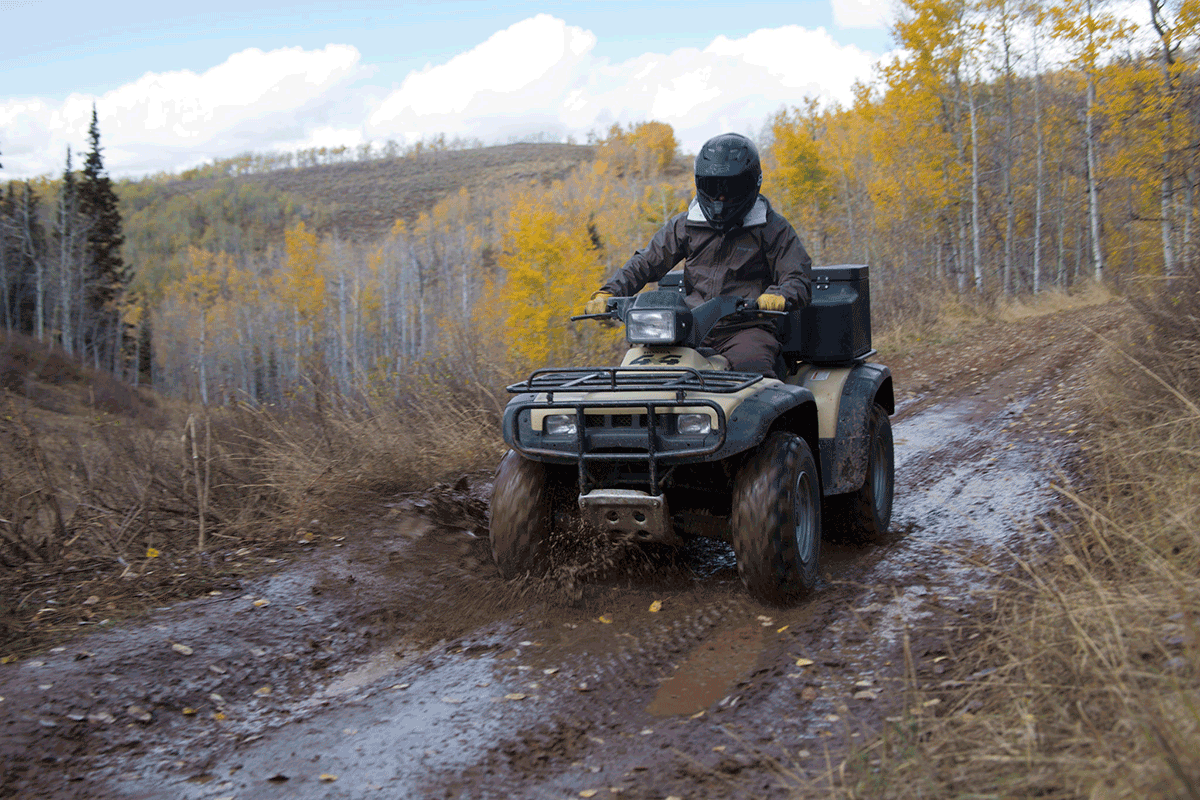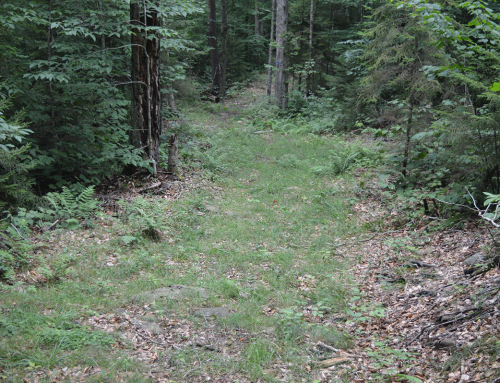We break down the Americans With Disabilities Act to help you understand how it affects management of the Forest Preserve
Proposed Changes to the Adirondack Park State Land Master Plan
The Adirondack Park Agency (APA) is proposing amendments to the Adirondack Park State Land Master Plan (Master Plan) that are intended to increase access to the Forest Preserve by persons with disabilities. As part of this effort, APA is proposing to remove Other Power-Driven Mobility Devices (OPDMDs) from the Master Plan’s definition of “motor vehicle.” This change would allow OPDMDs—which are defined to include cars, trucks, ATVs, golf carts and Segways—to be used by persons with disabilities in all Forest Preserve land classifications, including Wilderness, Primitive and Canoe.
Protect the Adirondacks (PROTECT) strongly supports increasing access to Forest Preserve recreational opportunities for persons with disabilities. However, PROTECT opposes both of these proposed Master Plan amendments because they would fundamentally alter the motorless character of these land classifications, and the Americans With Disabilities Act (ADA) does not require the opening of Wilderness, Primitive and Canoe areas to motor vehicle use, as APA apparently believes.

OPDMDs include motor vehicles, golf carts, Segways and All Terrain Vehicles (ATVs). Photo array from Massachusetts Department of Conservation and Recreation.
The ADA Does Not Require Fundamental Alteration of Existing Programs
Title II of the ADA prohibits State and local government entities from discriminating against persons with disabilities in the services, programs, and activities they provide and requires that “reasonable modifications” be made to such services, programs and activities to make them accessible to persons with disabilities. 42 USC § 12132. The ADA directs the Department of Justice (“DOJ”) to promulgate implementing regulations for Title II. DOJ promulgated those regulations in 1991 and updated and revised the regulations in 2010. 28 Code of Federal Regulations (“CFR”) Part 35.
Significantly, both the ADA and the DOJ implementing regulations specify that a public entity is not required to modify its programs or facilities for use by persons with disabilities if doing so would “fundamentally alter” the program or facility. The ADA provides:
Nothing in this chapter alters the provision . . . specifying that reasonable modifications in policies, practices, or procedures shall be required, unless an entity can demonstrate that making such modifications in policies, practices, or procedures . . . would fundamentally alter the nature of the goods, services, facilities, privileges, advantages, or accommodations involved.
42 USC § 12201(f); (emphasis added).
The DOJ regulations echo this crucial statutory provision:
A public entity shall make reasonable modifications in policies, practices, or procedures when the modifications are necessary to avoid discrimination on the basis of disability, unless the public entity can demonstrate that making the modifications would fundamentally alter the nature of the service, program, or activity.
28 CFR § 35.130(b)(7)(i); (emphasis added).
Allowing OPDMDs in Wilderness, Primitive and Canoe Areas Would Fundamentally Alter Those Areas
Allowing OPDMDs to be used in Wilderness, Primitive or Canoe areas would fundamentally alter the recreational program offered because public motor vehicle use has been prohibited in those areas since their inception. See Master Plan at 25, 31, 33. As recognized in the final programmatic environmental impact statement governing amendments to the Master Plan (“Master Plan EIS”), “Article XIV of the State Constitution places severe limitations on uses allowable in Forest Preserve.” Adirondack Park Agency, Final Programmatic Environmental Impact Statement Guidelines for Amending the Adirondack Park State Land Master Plan (Feb. 1979) at 33. The Master Plan EIS also recognizes that:
The very foundation of Wilderness is the guideline which prohibits motorized access by the public and severely restricts such access by the Department of Environmental Conservation. Alteration of this guideline to permit generalized use of motor vehicles or aircraft would destroy the character of wilderness, a cornerstone of the Master Plan.
Id. at 31.
The Master Plan EIS also makes clear that the prohibition of motor vehicles is crucial to the fundamental nature of Primitive and Canoe areas as well:
The Wilderness, Primitive and Canoe classifications generally prohibit the use of motor vehicles, motorized equipment and aircraft. Any amendment to the Plan which would sanction such uses in these areas would severely diminish the Primitive character of those lands and should not be proposed. Noise intrusion is only one component of an area’s character. The mere knowledge that motorized access is permissible diminishes an area’s sense of remoteness.
Id. at 35.
The ADA also recognizes the incompatibility of motor vehicle use in federal Wilderness areas:
Congress reaffirms that nothing in the Wilderness Act (16 U.S.C. 1131 et seq.) is to be construed as prohibiting the use of a wheelchair in a wilderness area by an individual whose disability requires use of a wheelchair, and consistent with the Wilderness Act no agency is required to provide any form of special treatment or accommodation, or to construct any facilities or modify any conditions of lands within a wilderness area in order to facilitate such use.
42 USC § 122207(c)(1); (emphasis added).
The U.S. Forest Service has also explicitly recognized the incompatibility of motor vehicle use in wilderness areas, stating that “[a]n example of a fundamental alteration to a program would be allowing use of a motor vehicle in an area not designated for motorized-vehicle use” and “[a]llowing motor vehicles in a nonmotorized area would be a fundamental alteration of the recreation program for that area.” U.S. Dept. of Agriculture, Forest Service, Accessibility Guidebook for Outdoor Recreation and Trails (Aug. 2012) at 6, 8.
Therefore, because allowing use of OPDMDs in Wilderness, Primitive or Canoe areas would fundamentally alter the recreational programs offered in these areas, it is not required by either the ADA or the DOJ implementing regulations, and the Master Plan should not be amended to allow such use.
Feature Photo Credit: USDA Forest Service. An all-terrain vehicle (ATV) is a type of OPDMD.






